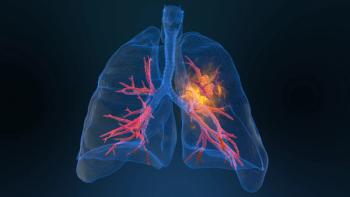
Digital Insulin Management Cuts Hospital Readmissions for CV Patients
The findings come as CMS targets cardiac procedures in both its hospital readmission reduction program and in a bundled payment model set to take effect July 1, 2017.
For hospitals, the cost of patients readmitted after discharge has never been higher. While the rise of value-based payment has forced improvements across the board, in the past year CMS has put extra scrutiny on cardiovascular cases, including patients treated for myocardial infarction (MI) and those who receive coronary artery bypass grafting (CABG).
CMS added the second procedure to its hospital reduction program this fall, which means hospitals face penalties if these patients are readmitted in 30 days. It has announced plans to start
A key challenge with these patients: many come to the hospital with out-of-control blood glucose, which may be brought on by stress or be due to undiagnosed diabetes. Thus, this population offers a 2-part challenge. First, the hospital must get hyperglycemia under control; then, it must figure out which patients will need insulin after they leave the hospital.
Sometimes, the need for ongoing insulin therapy is missed. When that happens, these patients are prime candidates for readmission, according to Tamera Parsons, CPHQ, vice president for quality with Mountains States Health Alliance (MSHA), a not-for-profit system of 13 hospitals that operates across parts of North Carolina, Virginia, Kentucky, and Tennessee.
Parsons and April Mumpower, BSH, senior quality data analyst for MSHA, recently presented a study showing how the health system used technology to both manage intravenous (IV) insulin therapy in the hospital, and then pinpoint which patients needed to switch to subcutaneous insulin—and when.
Glytec, which has FDA clearance for a cloud-based system to manage insulin dosing, selected MSHA as a research site for its electronic glucose management system, or eGMS. According to the studies Parsons and Mumpower presented in November at the Diabetes Technology Meeting showcase, eGMS produced sharp drops in readmission rates in 3 areas of cardiac care:
- 68% for patients who received CABG
- 65% for patients treated for congestive heart failure (CHF)
- 36% for patients treated for acute MI.1
In e-mail responses to The American Journal of Managed Care™, Parsons and Mumpower said the hospital had struggled with this area of care. “Effectively transitioning patients from IV to (subcutaneous) therapy was a challenge for MSHA, and Glytec’s eGMS has made that process much smoother,” they said. Results show patients on the Glytec system are less likely to see sharp fluctuations in blood glucose levels compared with those who are managed by personal interaction.
A key feature, they said, is the system’s ability to automate the switch to subcutaneous treatment. The eGMS system “determines when it’s best to initiate the transition and whether a patient meets the defined minimum criteria,” they wrote in the e-mail. The system also calculates the right daily dose, taking out the guesswork.
Results from the first study covered 3198 patients treated from January through December 2015.1 A longer view of 448 CABG patients treated in one of the system’s teaching hospitals from May 2013 through December 2015,2 found a 58.8% reduction in readmissions, along with dramatic drops in other indicators:
- For eGMS patients, final blood glucose was 127.9 mg/dL, compared with 185.7 mg/dL for case-matched patients receiving standard care.
- There were fewer episodes of severe hypoglycemia (< 40 mg/dL), 0.009% vs 0.36%; fewer events of < 70 mg/dL, 0.48% vs 2.61%; and a smaller number of patients with hypoglycemia, 0.38% vs 7.26%. Patients on the eGMS system spent more time in range.
- Across both studies, the eGMS patients had shorter lengths of stay, fewer complications, lower rates of mortality, and lower costs; Parsons and Mumpower said these details will be published later.
The Glytec system allowed patients to achieve better glucose control in the hospital, so that more of these patients could be discharged to their homes instead of to a skilled nursing facility (SNF). Reducing time spent in SNFs has been a priority for CMS.
Tight management in the hospital, the authors said, “reduces hypoglycemia and leads to healthier patients at discharge, with well-controlled glucose levels.”
While Glytec’s system does not “diagnose diabetes,” Parsons and Mumpower said, it does reveal which patients have uncontrolled hyperglycemia, and this allows clinicians to follow up with patients who were in need of better care before they arrived. “Our ability to discover whether the patient has undiagnosed diabetes or whether the patient has a known history of diabetes, but is not well-managed, has been enhanced through use of Glytec's eGMS."
· An electronic insulin management system not only ensures better care in the hospital, they said, it also allows for improvement after they leave. “This is true whether they receive future care in our health system or elsewhere,” the authors said.
References
1. Mumpower A, Hou S, Parsons T, McFarland R. Relationship between glycemic control using eGMS and readmission rates in cardiovascular patients hospitalized with AMI, CHF, or undergoing CABG during the implementation of a system wide glycemic initiative. Presented at the 16th annual Diabetes Technology Meeting, Bethesda, Maryland, November 10-12, 2016.
2. Mumpower A, Parsons T. Does glycemic control using eGMS reduce readmission rates for hospitalized patients undergoing CABG? Presented at the 16th annual Diabetes Technology Meeting, Bethesda, Maryland, November 10-12, 2016.
Newsletter
Stay ahead of policy, cost, and value—subscribe to AJMC for expert insights at the intersection of clinical care and health economics.















































